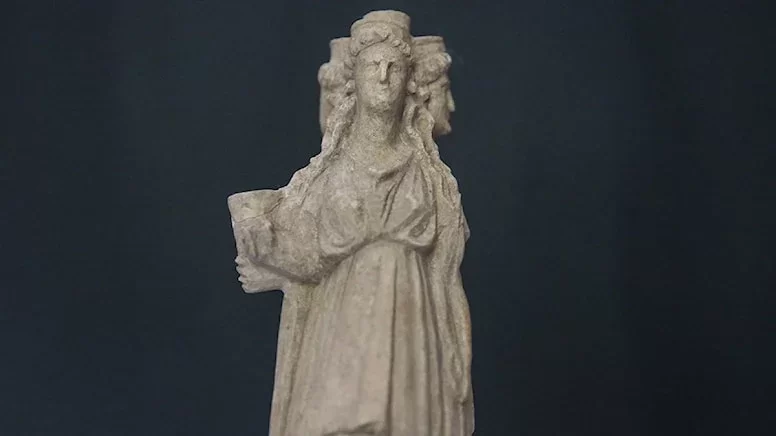Discovering History in Kelenderis: Unearthing the Goddess
In the sun-kissed city of Kelenderis, nestled within the southern Turkish province of Mersin, a remarkable archaeological revelation has come to light. A 2300-year-old statue of the three-headed goddess Hecate, alongside a treasure trove of Hellenistic period ceramics, has been unearthed, shedding new light on the ancient city’s rich past.
City of Mysteries: Kelenderis and Its Ancient Charms
Kelenderis, once a thriving ancient city, now resides as a historical gem on the Mediterranean coast, modernly known as Aydincik. This archaeological haven has been under meticulous excavation and restoration efforts since 1987, revealing tantalizing fragments of history preserved beneath the sands of time. In the year’s excavations, a collaboration between the Ministry of Culture and Tourism and Batman University, promising findings have stirred excitement among researchers.
A Journey through Time: The Goddess Hecate Emerges
Heading the excavation is Associate Professor Mahmut Aydın, who unveiled that this season’s efforts yielded Roman period floors, concealing a wealth of Hellenistic ceramics within their depths. Among these treasures stood the remarkable statue of the three-headed goddess Hecate, whose significance dates back centuries.

Goddess of Crossroads: Unraveling Hecate’s Presence
The unearthed statue, a rare representation of the three-headed goddess Hecate, offers a fascinating glimpse into ancient beliefs and practices. Hecate, often revered as a deity of the underworld in ancient Greece, possessed dual facets of benevolence and malevolence. Associated with magic, witchcraft, the moon, and the enigmatic creatures of the night, Hecate’s presence was marked by her depiction on doorways and her association with crossroads. The unique statue, depicting three figures of Hecate facing distinct directions, hints at its purpose at crossroads, marking boundaries, and acting as a guardian of sacred spaces.
Connecting the Threads: Hecate and Kelenderis
Drawing connections between the goddess and the ancient city, Aydın notes that Hecate’s veneration extended to Kelenderis. The presence of a Hecate temple in the nearby ancient city of Lagina in Muğla, along with inscriptions referencing Kelenderis’ participation in competitions honoring Hecate, underscores the goddess’s significance in the region. The newfound Hecate figurine, found amidst ceramics within the excavation site, adds a profound layer of meaning to Kelenderis’ historical tapestry.
Echoes of the Past: The Significance of the Discovery
The discovery of the Hecate figurine resonates deeply with the cultural and religious connections between Kelenderis and the goddess herself. Estimated to be 2300-2400 years old, belonging to the Hellenistic period, this artwork stands as a tangible link to ancient beliefs, practices, and the city’s unwavering reverence for the divine.
Preserving the Past: The Next Chapter
Following its unearthing, the Hecate figurine will find a new home in the Silifke Museum, where it will undergo careful examination and preservation. As researchers delve further into its historical significance, the ancient goddess Hecate’s allure continues to captivate, offering a tantalizing glimpse into the enigmatic world of ancient Kelenderis and its sacred connections.
In a region where history and myth converge, the discovery of the Hecate figurine stands as a statement to the power of ancient beliefs, the artistry of the past, and the relentless pursuit of uncovering the mysteries that lie beneath the sands of time.
Courtesy: Arkeonews
Once a Safety Spot Now a Terrorist Hub: The Underground City of Turkey

Contributor






